Steamed Tapioca Layer Cake (Bánh da lợn)
This traditional Vietnamese dessert consists of chewy layers that are typically made with puréed mung beans, tapioca starch, rice flour, and coconut milk or water. Traditionally, each cake has a pale yellow layer made with mung beans and a green layer that is flavored and colored with pandan leaves, while optional ingredients include durian or taro.
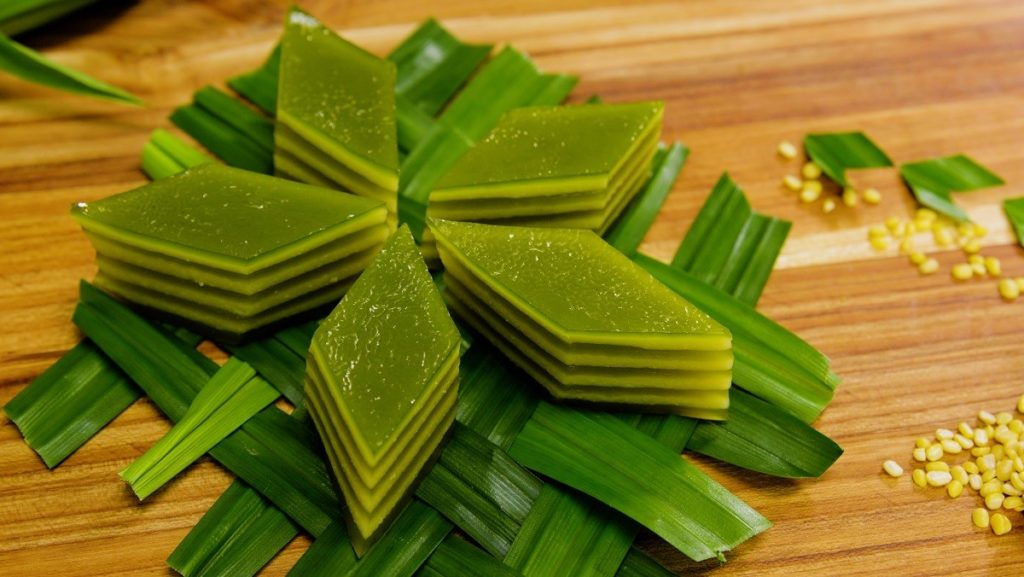 Once steamed and chilled, the cake is usually cut into diamond shapes.
Once steamed and chilled, the cake is usually cut into diamond shapes.
Pichi-pichi
Pichi-pichi is a Filipino dessert consisting of three key ingredients: grated cassava, sugar, and water. The concoction is steamed until it develops a firm, glutinous texture, and it is then rolled in desiccated coconut. The dessert is especially popular during merienda, parties, and celebrations.
 This delicate, sticky treat was originally invented in the Quezon Province.
This delicate, sticky treat was originally invented in the Quezon Province.
Ruam mit
Ruam mit is a popular Thai dessert made with ingredients such as coconut milk, sugar, tapioca pearls, corn, lotus root, sweet potatoes, beans, and jackfruit. Each bowl typically includes starchy noodles that are flavored and colored with various ingredients, and which may come in the shape of thin strips or more elaborate decorative forms.
 There is no set recipe for ruam mit, so each cook or street vendor adds their own ingredients to the mix. It is often consumed as a cool refreshment on hot summer days, topped with shaved ice. In Thailand, it is one of the cheapest desserts, and each bowl typically costs around 15 baht.
There is no set recipe for ruam mit, so each cook or street vendor adds their own ingredients to the mix. It is often consumed as a cool refreshment on hot summer days, topped with shaved ice. In Thailand, it is one of the cheapest desserts, and each bowl typically costs around 15 baht.
Coconut Jelly (Rau câu)
Rau câu is a Vietnamese jelly cake made with agar (gelatinous seaweed), coconut milk, condensed milk, and flavorings such as coconut, banana, chocolate, mocha, and vanilla. The texture is similar to that of panna cotta. Due to the usage of agar jelly, rau câu provides a great alternative for vegetarians who prefer not to consume animal gelatin.
 The dessert can be found in numerous Vietnamese delis and banh mi shops, while similar treats are also prepared throughout Southeast Asia and Indonesia.
The dessert can be found in numerous Vietnamese delis and banh mi shops, while similar treats are also prepared throughout Southeast Asia and Indonesia.
Halo-Halo
The refreshing halo-halo (lit. mix-mix) is a summer dessert or a snack of mixed fruit and beans, topped with finely crushed ice and either milk or ice cream. Some of the most common halo-halo ingredients include bananas, jackfruit, coconut, sweet potatoes, red mung beans, chickpeas, sugar palm fruit, purple yam jam, leche flan, and – in recent times – even sweet corn or corn crisps.
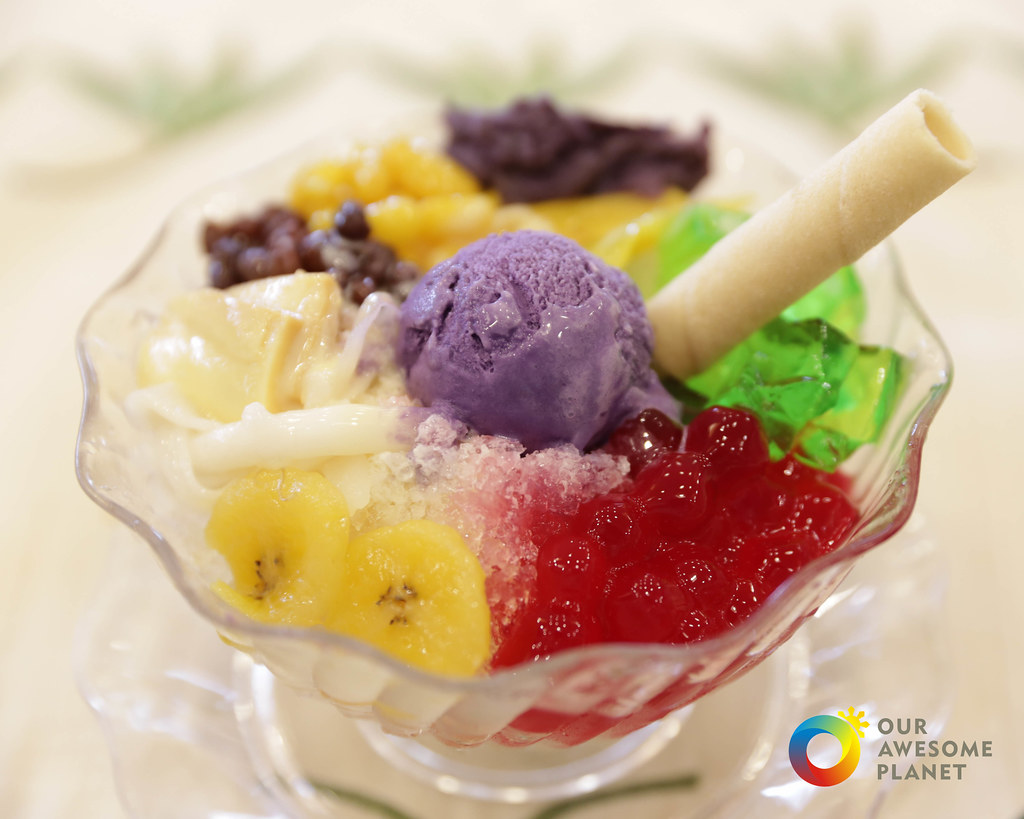 Originally, halo-halo desserts were sold by Japanese vendors in halo-halo parlors or at numerous street stalls before the occupation of the Philippines in the 1940s. In fact, this Filipino specialty is often said to have been inspired by a shaved-ice cooler called anmitsu, another Japanese summer drink.
Originally, halo-halo desserts were sold by Japanese vendors in halo-halo parlors or at numerous street stalls before the occupation of the Philippines in the 1940s. In fact, this Filipino specialty is often said to have been inspired by a shaved-ice cooler called anmitsu, another Japanese summer drink.
Chè
Vietnamese chè dishes include any traditional sweet soup, beverage, pudding, or any other custard-like dessert that is made with a base of either water or coconut cream and served either hot or cold. Other ingredients for making chè include various jellies and fruits, beans and pulses, rice and grains, and even tubers and cereals.
 It is believed that chè desserts originated in the central region of Vietnam, but today they are widely available throughout the country and prepared in countless variations. Because of their hearty contents like beans and sticky rice, they are a popular snack item commonly sold in plastic cups at Vietnamese grocery stores, while one of the most popular chè varieties prepared at home is the so-called chè đậu trắng.
It is believed that chè desserts originated in the central region of Vietnam, but today they are widely available throughout the country and prepared in countless variations. Because of their hearty contents like beans and sticky rice, they are a popular snack item commonly sold in plastic cups at Vietnamese grocery stores, while one of the most popular chè varieties prepared at home is the so-called chè đậu trắng.
Sorbetes
Sorbetes is a popular Filipino ice cream flavored with ingredients such as mango, chocolate, cheese, coconut, and purple yam (ube). Traditionally, it is produced from carabao milk and served in tiny scoops on sugar cones. Some Filipinos like to consume it sandwiched between bread buns, like a hamburger.
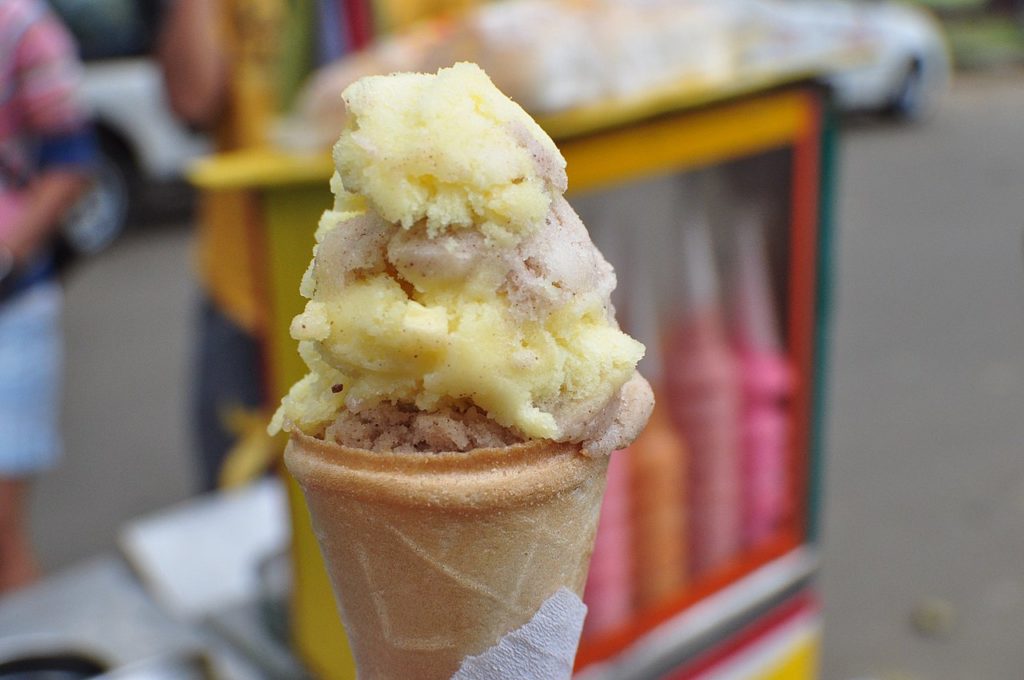 Although it sounds similar to a sorbet, coming from the Spanish sorbete, it is not a sorbet, but a dirty ice cream, as the locals jokingly call it due to the fact that it is sold along polluted streets. Sorbetes can usually be found at numerous street carts throughout the Philippines.
Although it sounds similar to a sorbet, coming from the Spanish sorbete, it is not a sorbet, but a dirty ice cream, as the locals jokingly call it due to the fact that it is sold along polluted streets. Sorbetes can usually be found at numerous street carts throughout the Philippines.
Khao niao mamuang
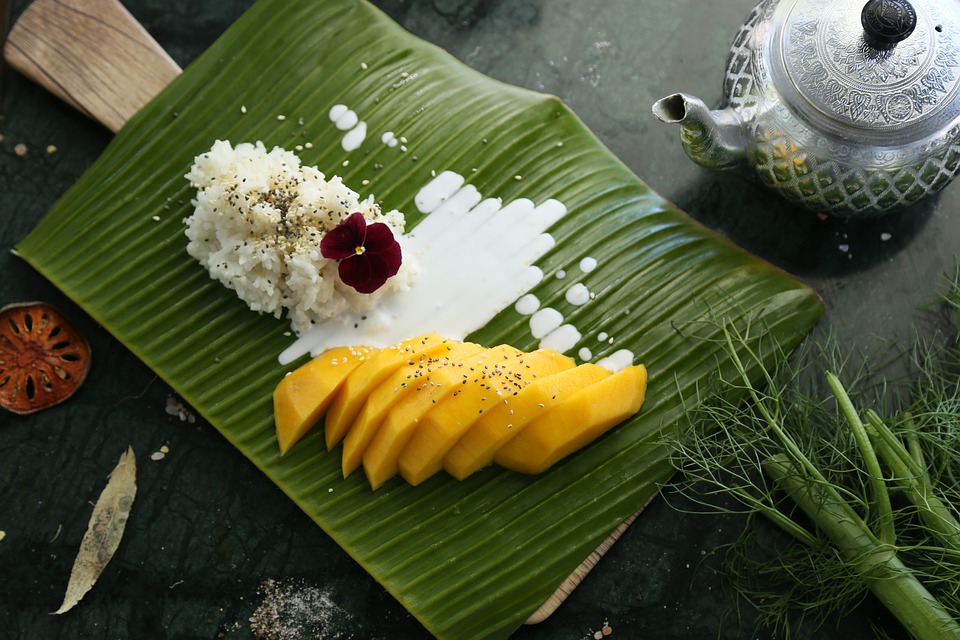 This traditional Thai rice pudding is a favorite way to finish any Thai meal. The dish is prepared with glutinous rice that is first steamed, then doused in sweetened coconut milk. Lastly, the rice is served sided with slices of fresh mango. This simple dessert is incredibly popular, and it can be found at virtually any eatery in Thailand.
This traditional Thai rice pudding is a favorite way to finish any Thai meal. The dish is prepared with glutinous rice that is first steamed, then doused in sweetened coconut milk. Lastly, the rice is served sided with slices of fresh mango. This simple dessert is incredibly popular, and it can be found at virtually any eatery in Thailand.
Turon
Falling in the group of popular lumpia snacks, turon is the famous Filipino treat made with saba plantains and jackfruit. The fruit is sliced lengthwise, dusted in brown sugar, enclosed in thin wheat wrappers, then fried until golden and crispy.
 Like other lumpia varieties, turon was also developed from the Chinese spring rolls and represents one of the most common sweet versions of the dish. Before it is served, it is commonly drizzled with caramel or sprinkled with roasted sesame seeds.
Like other lumpia varieties, turon was also developed from the Chinese spring rolls and represents one of the most common sweet versions of the dish. Before it is served, it is commonly drizzled with caramel or sprinkled with roasted sesame seeds.
It is usually sold by Filipino street vendors and enjoyed as a sweet snack or a satisfying dessert.
Leche Flan
Leche flan is a Filipino dessert that is essentially a caramel custard consisting of milk, sugar, and eggs, with the addition of vanilla flavoring. Traditionally, it’s oval-shaped due to the use of tin molds called llaneras. It is recommended to serve it chilled and coated with leftover caramel syrup.
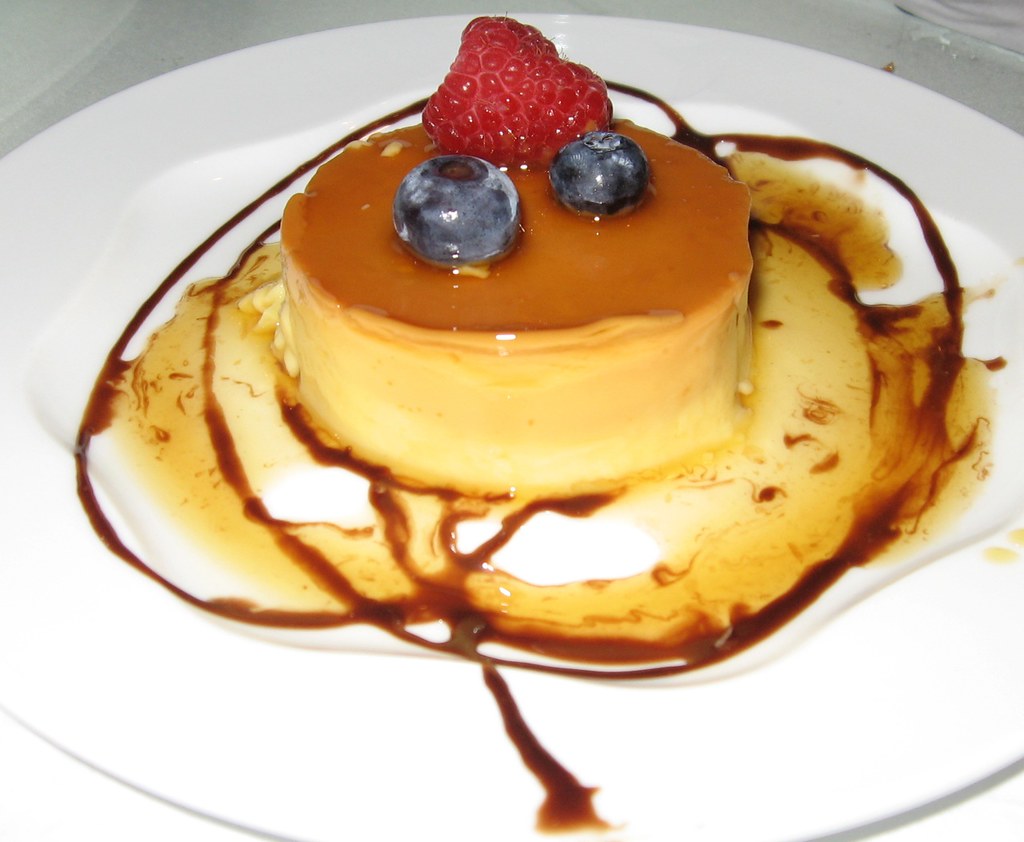 Leche flan is very popular at numerous Filipino celebrations and social gatherings. Originally, it was brought over to the Philippines during the Spanish colonization, so it is believed that it has origins in the regions on the border of Spain and France.
Leche flan is very popular at numerous Filipino celebrations and social gatherings. Originally, it was brought over to the Philippines during the Spanish colonization, so it is believed that it has origins in the regions on the border of Spain and France.
According to tasteatlas.com













